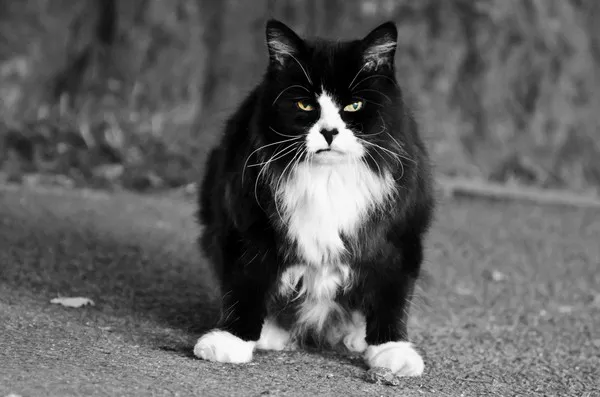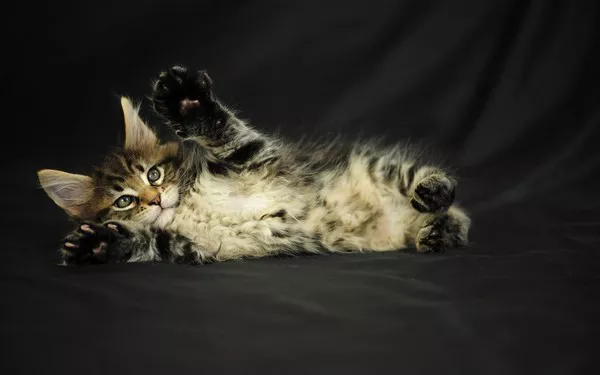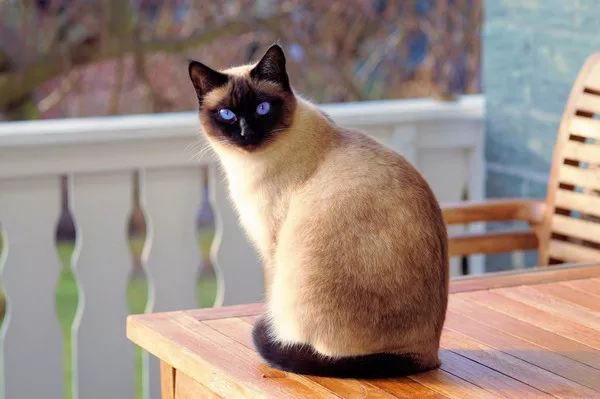As pet owners, one of the most significant decisions we make for our feline companions is whether to keep them indoors or allow them outdoor access. While outdoor cats may enjoy the freedom to roam, hunt, and explore, indoor cats often have a reputation for being healthier and living longer lives. This essay delves into the health implications of indoor living for cats, examining the benefits and potential drawbacks of keeping cats indoors. We will explore various aspects of indoor cat health, including physical well-being, mental stimulation, common health issues, and strategies for ensuring a fulfilling indoor life. By understanding these factors, cat owners can make informed decisions that promote the overall health and happiness of their feline friends.
The Health Benefits of Indoor Living
Reduced Risk of Injuries and Accidents
One of the most significant advantages of keeping cats indoors is the reduced risk of injuries and accidents. Outdoor cats face numerous hazards, including:
Traffic Accidents: Cats that roam outside are at risk of being hit by cars, which can lead to severe injuries or death.
Predators: Outdoor cats may encounter larger animals, such as dogs or wildlife, that can pose a threat to their safety.
Fights with Other Animals: Cats that go outdoors may engage in fights with other cats or animals, leading to injuries and potential transmission of diseases.
By keeping cats indoors, owners can significantly reduce the likelihood of these risks, leading to a safer environment.
Lower Incidence of Infectious Diseases
Indoor cats are generally less exposed to infectious diseases compared to their outdoor counterparts. Common illnesses that outdoor cats may encounter include:
Feline Leukemia Virus (FeLV): A contagious virus that can lead to severe health issues and is primarily spread through close contact with infected cats.
Feline Immunodeficiency Virus (FIV): Another viral infection that weakens the immune system and is often transmitted through bites during fights.
Upper Respiratory Infections: These infections can spread rapidly among cats, particularly in multi-cat households or outdoor colonies.
Indoor cats are less likely to contract these diseases, especially if they are kept away from unvaccinated or unknown outdoor cats.
Control Over Diet and Nutrition
Keeping cats indoors allows owners to have greater control over their diet and nutrition. Indoor cats can be fed a balanced diet tailored to their specific needs, which can help prevent obesity and related health issues. Key benefits include:
Portion Control: Owners can measure food portions to prevent overeating, which is a significant risk factor for obesity in indoor cats.
Quality of Food: Indoor cats can be provided with high-quality, nutritious food that meets their dietary requirements, promoting overall health.
Longevity and Quality of Life
Research indicates that indoor cats tend to live longer than outdoor cats. Studies have shown that indoor cats can live an average of 12 to 15 years, while outdoor cats often have a shorter lifespan of around 5 to 7 years. The increased longevity of indoor cats can be attributed to the reduced risks associated with outdoor living, as well as better access to veterinary care and nutrition.
The Importance of Mental Stimulation
The Risks of Boredom and Stress
While indoor living offers many health benefits, it can also lead to boredom and stress if cats do not receive adequate mental and physical stimulation. Boredom can manifest in various behavioral issues, including:
Destructive Behavior: Cats may scratch furniture, knock over items, or engage in other destructive behaviors due to boredom.
Over-Grooming: Some cats may over-groom themselves when stressed or bored, leading to skin irritations and hair loss.
Aggression: Lack of stimulation can lead to increased aggression toward other pets or humans.
Providing Enrichment
To ensure indoor cats remain mentally stimulated, owners should provide various enrichment activities, including:
Interactive Toys: Toys that encourage play and exercise, such as feather wands, laser pointers, and puzzle feeders, can keep cats engaged.
Scratching Posts: Providing scratching posts can help satisfy a cat’s natural instinct to scratch and can prevent destructive behavior.
Vertical Space: Cats enjoy climbing and exploring, so providing cat trees or shelves can create a stimulating environment.
Social Interaction
Cats are social creatures and require interaction with their owners or other pets. Regular playtime and affection can help reduce stress and promote a positive mental state. Owners should dedicate time each day to engage with their cats, whether through play, petting, or simply sitting together.
Common Health Issues in Indoor Cats
While indoor cats generally enjoy better health, they are not immune to specific health problems. Understanding these issues can help owners take preventive measures.
Obesity
Obesity is one of the most common health concerns for indoor cats. Factors contributing to obesity include:
Lack of Exercise: Indoor cats may not get enough physical activity, leading to weight gain.
Overfeeding: Owners may inadvertently overfeed their cats, especially if they do not measure portions.
Preventing Obesity
To prevent obesity, owners should:
Provide Regular Exercise: Engage in daily play sessions to encourage physical activity.
Monitor Weight: Regularly weigh cats and consult with a veterinarian if weight gain is observed.
Adjust Diet: Feed a balanced diet and avoid free-feeding, which allows cats to eat whenever they want.
Urinary Tract Issues
Indoor cats may be at a higher risk for urinary tract issues, including urinary crystals and bladder stones. Contributing factors include:
Dehydration: Indoor cats may not drink enough water, leading to concentrated urine.
Diet: Certain diets can influence urine pH and contribute to crystal formation.
Promoting Urinary Health
To promote urinary health, owners should:
Encourage Hydration: Ensure fresh water is always available and consider using a water fountain to entice cats to drink more.
Feed High-Quality Food: Choose diets formulated to promote urinary health, with appropriate moisture content and balanced nutrients.
Dental Health
Dental disease is common in indoor cats and can lead to pain, infection, and tooth loss. Factors contributing to dental issues include:
Lack of Chewing: Indoor cats may not have the same opportunities to chew on natural items that help clean their teeth.
Diet: Soft diets may not provide the necessary abrasion to maintain dental health.
Maintaining Dental Health
To support dental health, owners should:
Provide Dental Treats: Special dental treats can help reduce plaque and tartar buildup.
Regular Vet Check-ups: Schedule regular veterinary dental check-ups and cleanings as needed.
At-Home Dental Care: Consider brushing your cat’s teeth with a vet-recommended toothpaste.
The Role of Veterinary Care
Regular Check-Ups
Regular veterinary check-ups are essential for maintaining the health of indoor cats. Routine examinations can help identify potential health issues early, allowing for timely intervention. During these visits, veterinarians can:
Administer Vaccinations: Keep cats up-to-date on vaccinations to protect against preventable diseases.
Conduct Health Screenings: Perform blood tests and other diagnostics to monitor overall health and detect underlying issues.
Preventive Care
Preventive care is crucial for indoor cats. This includes:
Parasite Prevention: Indoor cats can still be at risk for parasites, such as fleas and ticks. Regular preventive treatments are essential.
Spaying/Neutering: Spaying or neutering helps prevent certain health issues and unwanted behaviors.
The Impact of Lifestyle on Indoor Cat Health
The Importance of Environment
The indoor environment plays a significant role in a cat’s overall health. Owners should create a safe and stimulating environment that meets their cats’ needs. Key considerations include:
Safe Spaces: Provide quiet areas where cats can retreat and feel secure.
Natural Light: Ensure access to natural light, as it can positively impact a cat’s mood and well-being.
Temperature Control: Keep indoor temperatures comfortable and avoid exposing cats to extreme temperatures.
Multi-Cat Households
In multi-cat households, it’s essential to manage social dynamics to prevent stress and aggression. Owners should:
Provide Multiple Resources: Ensure enough litter boxes, food bowls, and resting areas for each cat to reduce competition.
Monitor Interactions: Observe interactions between cats and intervene if signs of aggression or stress arise.
Conclusion
In conclusion, indoor cats often enjoy better health and a longer lifespan compared to their outdoor counterparts. The reduced risks associated with injuries, diseases, and environmental hazards contribute to their overall well-being. However, indoor living also presents challenges, such as the need for mental stimulation and the potential for obesity and urinary issues.
By providing a safe, enriching environment, engaging in regular play, and ensuring proper nutrition, cat owners can promote the health and happiness of their indoor cats. Regular veterinary care is also essential for early detection and prevention of health issues. Ultimately, a proactive approach to indoor cat care can lead to a fulfilling and healthy life for our feline companions.
Related topic:



























